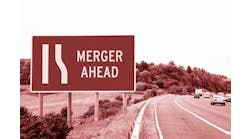It’s nearly impossible to avoid the constant reports of new vehicle technology and trends. From new materials to changes in necessary tools, vehicle technology is changing more rapidly than ever. Nissan announced in August that it plans to have multiple autonomous drive vehicles “commercially viable” by 2020. Tesla Motors made a similar pledge for 2017.
James Spears, assistant vice president of claims service at USAA, agrees that shop owners need to be aware of the imminent changes. However, he also reminds shops that these changes will not happen overnight. Spears recently talked with FenderBender to discuss the upcoming changes in new vehicle technologies, what shops need to do to prepare, and the realistic timeframe they have to adapt.
What are some of the new vehicle technologies and trends that you think will impact the way shops work?
One of the things I believe shops will need to accurately prepare for in the future is going to be the increase and the rapid rollout of new technology by the OEs both in the cabin and on the outside of the car. We have OEs that have pledged that they are going to have autonomous vehicles by the year 2020. This is where we really need to make sure that, if these are produced, our shops are able to service these vehicles and diagnose those outside sensors that could be damaged in a mild collision, which could affect how accurately the vehicle can navigate the passenger.
Another thing is the rising trend for the need for education. Education is often undervalued. I know it takes a lot to send people to a class and take time off, but if we don’t get in front of this and make sure shops have appropriate certification, I believe those shops may not see as much work in future as other shops that can demonstrate they have attained certain certifications.
What are the gaps you see in getting ready for these changes?
I think one of the biggest gaps we have now is the number of certified welders out there. Even if a whole shop isn’t I-CAR Gold class, I highly recommend that their welder is certified. It’s a way to demonstrate that if a customer goes to your shop, you can handle the aluminum, steel and unibody welds that everybody needs right now. Of course, being able to identify and repair the alternative metals we have now, such as carbon fiber and aluminum, is important too. Being able to demonstrate that you can accurately identify the substrate material, repair it and have your welder certify that those body welds are going to hold is a great first step.
I can also see shops becoming tremendously more competitive. Insurers are increasingly going to take a look at specific things shops can deliver, other than great customer satisfaction. If I-CAR is able to get their branding initiatives in place, it may be the next good housekeeping seal that people are going to look for. Vehicles aren’t getting any cheaper; for most people, vehicles are their second biggest investment, after their homes. I do believe that as we get into the $60,000–$80,000 cars, people will start looking for that good housekeeping seal as a vote of confidence that a shop can repair that expensive vehicle.
Which trends do you think will have a more rapid impact on the industry?
What I have been told by some of the OEs that we speak with is that we’re going to have more of the anti-collision technology enter the marketplace first, followed up by the autonomous vehicles. If we really take a look, a lot of the basic underlying technologies, such as antilock brakes, drive-by-wire, and brake-by-wire, are actually decades old. Now they’re being put together by a group of programmers that have put outward board sensors on the front of the old-fashioned cruise control to regulate the speed of the vehicle relative to traffic to start the braking process early.
We’re going to see a lot of these technologies speaking to each other very quickly. The dynamic stability control that is in vehicles is just an offshoot of having antilock brakes. Now with dynamic stability control and drive-by-wire, you can make a vehicle steer itself and brake itself. We also have self-parking vehicles that use those outward board sensors, which can be directed to steer the vehicle while it parks.
What kind of tools and equipment are needed?
What is really going to change are the tools, equipment and materials that shops will need. You’re going to see a different set of tools, which will be more electronic and diagnostic based. As far as equipment, the welding machines are advancing rapidly. Just having TIG and MIG welders isn’t going to get you where you need to be when it comes to spot welding. As far as having the proper equipment to paint the vehicle, the waterborne finishes that are being demanded by EPA regulations will become more standard.
Having a good diagnostic tool is crucial. The OBD II port tool, for example, lets you know what code is thrown so you can diagnose the problem electronic component. The idea that only the OE can diagnose those certain components will really put the independent shop owner at a tremendous amount of risk unless they have equal access to the information about the repair.
How do you see these changes impacting day-to-day business?
I believe that you may see some shops that might just specialize in cosmetic repair. I think you may see some shops that move to very light [repairs] and focus on minor damage to the external panels, painting vehicles, and repairing plastics.
And then you may see what you might call “heavy-hit” shops that have consolidated all their investment into one location that can take care of frame movement, replacing panels or tailor-welded blanks.
Particularly if you’re a multi-shop owner, it can get very expensive to have this repairing technology in every single location. It might be more advantageous for them to divide their shops into minor and heavy damage, and have the shops that work in cosmetic repair act as feeders to the heavy-hit shops.
How long do shops have to prepare for the new vehicle technologies?
One of the biggest misconceptions that I see is that people believe that as soon as autonomous vehicles are produced, all vehicles will be autonomous. That’s not true. If you take a look at what most insurers have on their books, the average age of fleets have really gone up. I remember a few years ago when the age of fleet was 6 years. Now it’s up to more than 10 years old.
If you were to take a snapshot of today in 2013 and think of a fleet aging 10 years, the average vehicle in the year 2023 will look like what’s rolled off the factory today. If the OEs do start producing autonomous vehicles by that 2020 mark, the law of large numbers dictates that they will become such a minor share of the market that shops will not become instantly extinct by any measure at all.
Realistically, I think the demands of the EPA and government regulations will cause any shops not willing to make the investments to exit the market quicker than any technologies the OEs are producing will. If a shop does not meet the state or federal EPA standards to becoming greener, for example, I think that is going to be the first wave of shops exiting.
The new wave you’re going to see after that is shops that will not be able to compete on the new vehicles.
What do shops need to do now to prepare for the changes in technology?
I believe that what shops need to do now is decide what their business model is going to be. When considering the target state, are they going to be the shop in 2020 that can take that share of the market and that share of the consumer’s wallet that has that type of vehicle? How are they going to interface with the consumer and the different insurers as technology evolves? That decision needs to be made now and those investments, which include having the right people on board, need to be made now to prepare.
I believe those types of decisions are going to be best made with the counsel they receive from their paint suppliers and organizations, such as I-CAR and some others.
If you take a look at the courses that I-CAR is introducing, those are generally the state-of-the-art technology that shops need to be prepared for. The OEs also have terrific people on board that can coach people and educate the shops on what they’re actually producing.



